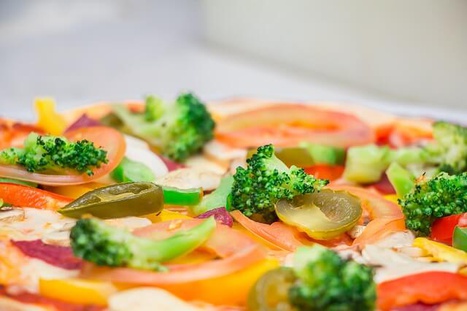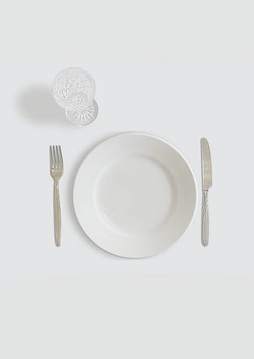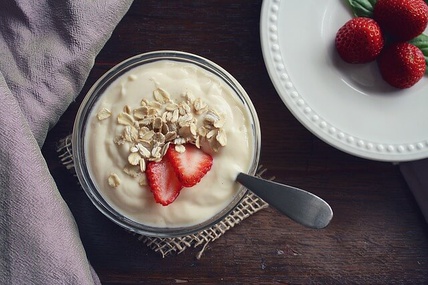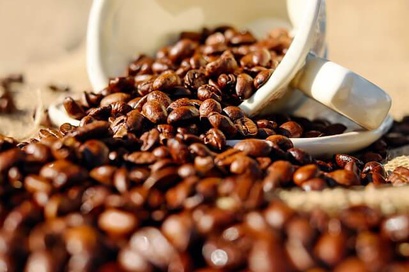La destruction de la flore intestinale
L’intestin abrite également une microflore imposante, 100 000 milliards de « bactéries amies », située essentiellement dans le colon. L’exposition journalière aux produits chimiques toxiques, aux bactéries dans l’eau de consommation, aux résidus d’antibiotiques dans la nourriture, provoque une diminution du nombre de « bactéries amies ». Cela favorise une prolifération de microorganismes néfastes et même pathogènes, la flore se trouve ainsi complètement déséquilibrée et cela déclenche généralement des épisodes de diarrhée.
La flore peut également être détruite suite à la prise d’antibiotiques. Parmi les autres types de diarrhées, citons également la diarrhée du voyageur ou turista résultant d’un brusque changement d’alimentation, la diarrhée infectieuse d’origine bactérienne, virale, voire parasitaire, les diarrhées dues aux intolérances et aux allergies alimentaires, ou encore à une hypersensibilité à une substance particulière. D’autres diarrhées trouvent leurs origines dans de véritables pathologies, tels le syndrome du côlon irritable, la maladie cœliaque, la maladie de Gee et les diarrhées infantiles chroniques.
Traitement naturel des diarrhées
Les probiotiques sont des bactéries vivantes, qui ingérées en quantité convenable, ont des effets préventifs ou curatifs sur la diarrhée. Sont surtout utilisés les bactéries de la famille des Lactobacillus, la bactérie la plus bénéfique de la flore de l’intestin grêle, et des Bifidobacterium qui est la principale bactérie bénéfique de la flore du colon au niveau duquel elle exerce une activité antimicrobienne très importante.
Les origines alimentaires
Le régime alimentaire peut indubitablement, selon des mécanismes d’intolérance extrêmement complexes, provoquer, aggraver ou soulager la diarrhée. Il détermine aussi en grande partie la durée des épisodes de diarrhée occasionnelle. Il est possible, grâce à une alimentation étudiée, de réduire du tiers ou de moitié la durée de la période de rétablissement d’une diarrhée sévère.

Les diarrhées aiguës ou gastro-entérites
Les micro-organismes ou bactéries qui causent la gastro-entérite pénètrent dans l’appareil digestif par des aliments contaminés ou des mains sales. L’infection est considérée comme très contagieuse et s’étend facilement. Si vous avez une gastro-entérite, il vaut mieux ne pas toucher ni préparer de nourriture, sinon lavez-vous bien les mains avant de toucher aliments, couverts, vaisselle ou ustensiles de cuisine.
L’intoxication alimentaire est causée par des toxines bactériennes présentes dans des aliments contaminés. Une cuisson suffisante détruit les bactéries, mais pas les toxines.
Des aliments tels que les fruits de mer crus, les œufs et les fromages à pâte molle non frais sont autant de sources d’infection possible. Évitez les boîtes de conserve bosselées ou d’aliments périmés. Évitez de laisser les aliments surgelés décongeler trop longtemps et lentement.
Attention à la déshydratation, buvez beaucoup pour compenser les pertes hydriques, mais évitez l’alcool. Si vous vomissez, prenez de fréquentes gorgées d’eau. Mangez des aliments riches en potassium, car les pertes de ce minéral sont importantes en cas de diarrhée aiguë. N’oubliez pas que l’ail cru aide à combattre l’infection et que le yaourt non pasteurisé peut aider à rééquilibrer la flore intestinale après une infection. Tenez également compte des données fournies ci-dessous pour la turista.
La turista
Pour éviter la diarrhée des voyageurs, lavez-vous les mains avant le repas, buvez de l’eau minérale, purifiée ou bouillie, évitez la glace, la peau des fruits ou rincez ceux-ci avec de l’eau minérale et évitez les salades lavées à l’eau du robinet.
Si vous êtes affecté par la turista, agissez de la même manière que pour tout autre type de diarrhée : continuez de manger. Et buvez beaucoup, en privilégiant les boissons gazéifiées sans caféine et sans sucre. Consommez des aliments féculents, tel un potage aux pommes de terre, au riz ou aux lentilles. La soupe au poulet et aux nouilles, si elle n’est pas trop salée, est un bon aliment antidiarrhéique comme le sont également les bananes, le riz et les toasts. Évitez le lait, la caféine, les aliments gras et toute forme de matière inassimilable.
Faut-il jeûner ?

Quand la diarrhée survient, ne vous mettez surtout pas à jeûner ; cette recommandation de première importance s’applique aux personnes de tous âges. On doit en effet laisser la nature pourvoir elle-même à la guérison. Le mythe voulant qu’il soit indiqué, en cas de diarrhée, de cesser de s’alimenter pour « laisser les intestins se reposer » persiste néanmoins dans l’esprit des gens.
Ne cessez pas de manger, modifiez tout simplement votre régime, en privilégiant les aliments tels que le potage au riz ou aux carottes, le tapioca, bref, les aliments qui prennent du volume dans les voies digestives. Avalez de petites portions, fréquemment et lentement, car ingérer les aliments à grosses bouchées ou à grosses gorgées peut provoquer des nausées.
Encouragez aussi les enfants qui ont la diarrhée à se nourrir assez souvent et autant qu’ils le désirent, soit cinq à sept fois par jour.
Beaucoup de liquides, mais lesquels ?
Se confiner à des bouillons sans substance, au thé et aux autres boissons « claires », alors que le côlon tente de se réhabituer graduellement à une diète solide, est en général inutile. Cette stratégie ne fait que réduire la quantité de nutriments indispensables à l’organisme, particulièrement chez le nourrisson et le jeune enfant, ce qui prolonge la durée de la maladie.
Évitez les liquides clairs, car ils contiennent trop (les bouillons de bœuf et de poulet, par exemple) ou pas assez de sodium (boissons gazeuses, thé) ; ils sont trop pauvres en potassium (Gatorade). De plus, leur teneur en sucre nocive dans plusieurs remèdes maison est le sucre, car ce dernier absorbe l’eau et les sels du corps, ce qui provoque des vomissements.
Quelques vieux remèdes
Il n’y a pas de meilleur remède contre la diarrhée que les liquides féculents. Un potage ou une boisson assez épaisse préparés à partir de n’importe quel aliment féculent (riz, maïs, blé ou pommes de terre…), exercent un effet bénéfique. Certaines populations en connaissent depuis longtemps les vertus. Le potage aux lentilles ou aux carottes, le porridge au riz, le tapioca, le jus de noix de coco et la soupe au poulet et aux nouilles sont les antidiarrhéiques les plus prisés à travers le monde.
Contrairement aux liquides sucrés, les liquides féculents tendent à diminuer les vomissements, à réduire la perte de liquide et à abréger la période de rétablissement.
Comment l’explique-t-on ? Certaines substances non assimilées tels les fibres ainsi que l’amidon redonneraient aux selles leur consistance normale et hâteraient la guérison.
- Le yogourt à base de bactéries vivantes, aliment protecteur, est sans doute l’aliment le plus recommandable pour prévenir la diarrhée. Le yogourt laisse peu de chances aux agents diarrhéiques de se développer dans les voies intestinales. C’est un aliment absolument inoffensif, n’oublions cependant pas qu’il s’agit d’un laitage avec tous les inconvénients que cela comporte. Le yogourt préparé à partir du Lactobacillus GG (L.GG) semble plus efficace que les autres types de yogourt. On a remarqué également que les patients sous traitement antibiotique (érythromycine) qui ingéraient chaque jour une demi-tasse de yogourt, étaient beaucoup moins vulnérables à la diarrhée, aux malaises gastriques, aux gaz et autres malaises abdominaux accompagnant souvent l’absorption de ce type de médicament. Le L.GG survivrait pendant plusieurs jours dans le tractus intestinal de l’humain et produirait une substance bactéricide agissant à la manière des antibiotiques.

-
- Un remède suédois : le potage aux myrtilles. Les myrtilles séchées entrent depuis longtemps en Suède dans la composition d’un potage auquel on attribue des vertus antidiarrhéiques. Les anthocyanosides, présents en très forte quantité dans la myrtille, détruiraient les bactéries, dont l’E-coli, souvent à l’origine de la diarrhée.
-
- Le cassis, variété de groseille, est aussi très riche en composés bactéricides. Il s’est montré efficace dans des tests effectués sur des humains pour combattre les infections gastro-intestinales. La dose thérapeutique habituelle administrée aux enfants est de 10 g environ.
- Le fenugrec, antidiarrhéique pour adultes très populaire, il a été testé scientifiquement. Une demi-cuillerée à thé de graines de fenugrec mêlées à de l’eau, trois fois par jour, produirait un soulagement rapide et marqué, habituellement après la prise de la seconde dose. Cette épice est un bon remède contre la diarrhée et les spasmes gastro-intestinaux.
Attention aux surdoses de fibres !
Les fibres sont un remède extraordinaire pour soulager nombre de malaises, mais une surconsommation de cette substance alimentaire peut conduire à une assez grave diarrhée.
Les diarrhées chroniques
-
Régime sans lactose
Les enfants et les adultes souffrant de diarrhées chroniques devraient adopter une diète sans lactose durant deux semaines environ.
ÉVITER le lait, le fromage et la crème glacée. Le yogourt à base de bactéries vivantes ne devrait pas poser de problème. Si la diarrhée diminue, c’est sans doute qu’elle était, partiellement tout au moins, attribuable à une intolérance au lait
-
Le café
Cessez de boire du café pendant quelques jours et attendez de voir si les troubles disparaissent. Le café est une cause fréquente de diarrhée chez les personnes qui ont un côlon hypersensible.

-
Le sorbitol
Les diabétiques et les personnes au régime qui, sans cause apparente, souffrent fréquemment de diarrhée, devraient porter attention à leur consommation de sorbitol (substitut naturel du sucre entrant dans la composition des bonbons dits « diététiques », de la gomme sans sucre et des aliments transformés). Le sorbitol est, médicalement parlant, un agent laxatif reconnu.
Conclusion
En plus d’une adaptation personnelle de l’alimentation, seront toujours utiles : les pommes pelées et râpées, les yaourts, les modes de cuissons sains et sans corps gras, des repas simples avec une bonne mastication en évitant les aliments trop froids. Vous pouvez également introduire de l’eau de riz blanc dans votre hydratation.



